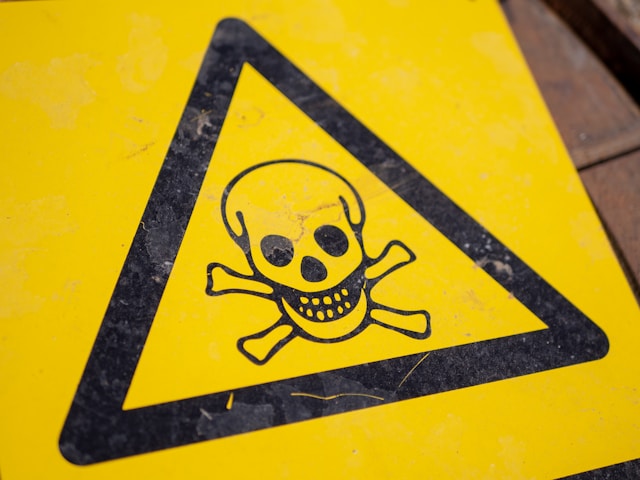A major incident is underway after a spill of Sodium cyanide contaminated a 12-mile stretch of canal between Walsall and Birmingham
A major incident has been declared in Walsall after a toxic chemical spill in a canal has raised serious health concerns. Sodium cyanide, a hazardous substance, was discovered in the canal network stretching from Walsall to Birmingham, prompting authorities to impose a 12-mile exclusion zone along the affected waterways.
Walsall Council leader Garry Perry confirmed that the chemical involved is sodium cyanide. This substance, known for its toxic properties, poses significant health risks including convulsions, vomiting, and loss of consciousness. The public has been advised to avoid the canal and adjacent towpaths, which extend through Wednesbury, Tipton, and West Bromwich.
Embed from Getty ImagesThe spill was first identified on Monday, and initial assessments revealed that sodium cyanide had contaminated the canal stretch from Spinks Bridge in Walsall to Birchills Street Bridge. Dead fish have been observed in the affected areas, further highlighting the environmental impact of the spill. The presence of the chemical in the water poses a direct risk to both human health and wildlife.
Authorities have established an exclusion zone extending from the Walsall lock flight to lock flights at Rushall/Ryders Green, reaching as far as Perry Barr in Birmingham. This precautionary measure aims to protect individuals from potential exposure and to facilitate the ongoing investigation into the spill. Water testing is underway to determine the extent of contamination, and regular updates will be provided as more information becomes available.
Residents have expressed outrage over the incident, with some calling for significant fines against those responsible. One local remarked on the need for accountability, stating that the spill is “disgusting” and that the culprits should face substantial penalties.
The UK Health Security Agency (UKHSA) has described sodium cyanide as a white crystalline solid with a faint almond odor, commonly used in industries such as metal cleaning, plating, and chemical production. Exposure to sodium cyanide can lead to severe health effects, including headache, nausea, dizziness, and in extreme cases, loss of consciousness and convulsions.
Walsall Council has emphasized the importance of avoiding contact with the contaminated water and surrounding areas. Anyone who has been exposed to the water and feels unwell is urged to seek medical advice through the NHS 111 service or call 999 in an emergency. The council is working with several partner agencies to address the situation and mitigate the impact on public health and the environment.
The incident underscores the potential dangers associated with industrial chemicals and highlights the need for stringent safety measures to prevent such occurrences. The investigation into how the sodium cyanide entered the canal system is ongoing, with authorities committed to ensuring that appropriate actions are taken to safeguard the community and restore the affected areas.
Analysis:
Political:
The toxic chemical spill in Walsall raises significant political issues related to environmental regulation and public safety. The incident highlights the challenges faced by local and regional authorities in managing industrial risks and ensuring compliance with environmental regulations. The response to the spill, including the establishment of an exclusion zone and coordination with various agencies, reflects the government’s commitment to addressing public health emergencies and holding responsible parties accountable.
Social:
The spill has considerable social implications, particularly regarding public trust and safety. The affected community is experiencing heightened anxiety and frustration over the potential health risks and environmental damage caused by the spill. Public reaction includes calls for stringent penalties for those responsible, reflecting broader societal concerns about environmental protection and corporate accountability. The incident also underscores the importance of transparent communication from authorities to manage public concerns and provide timely updates.
Racial:
While the specific racial implications of the spill are not immediately evident, environmental hazards disproportionately affect marginalized communities. In the UK, areas with higher levels of deprivation often face greater environmental risks, including exposure to hazardous substances. This incident may indirectly affect communities that are already vulnerable, highlighting the need for equitable environmental policies and responses.
Gender:
The spill does not directly intersect with gender issues; however, gender dynamics in emergency responses and environmental management can be considered. Women, particularly in households responsible for family health and safety, may experience heightened concern over the spill’s impact on their families. Additionally, female-led community organizations may play a role in advocating for affected residents and pushing for accountability.
Economic:
Economically, the spill poses substantial costs related to environmental cleanup, public health response, and potential legal liabilities. The contamination of a major waterway affects local businesses, particularly those dependent on recreational and environmental resources. The spill’s impact on property values and community trust can have long-term economic consequences, emphasizing the need for effective risk management and regulatory oversight in industrial activities
